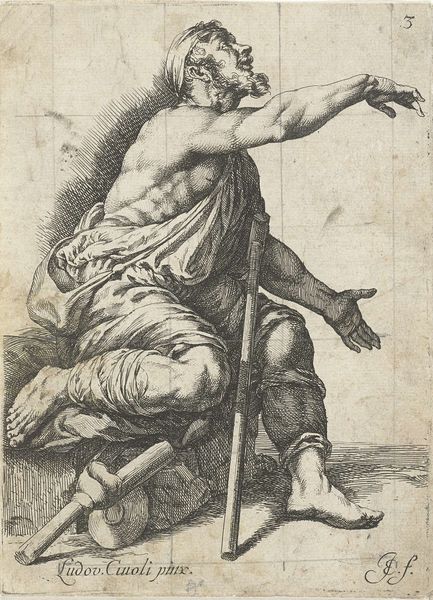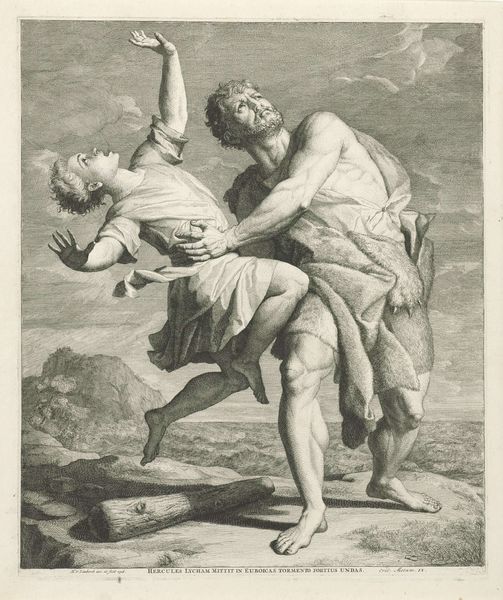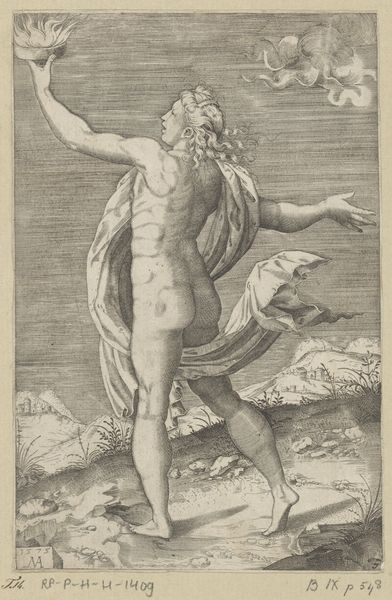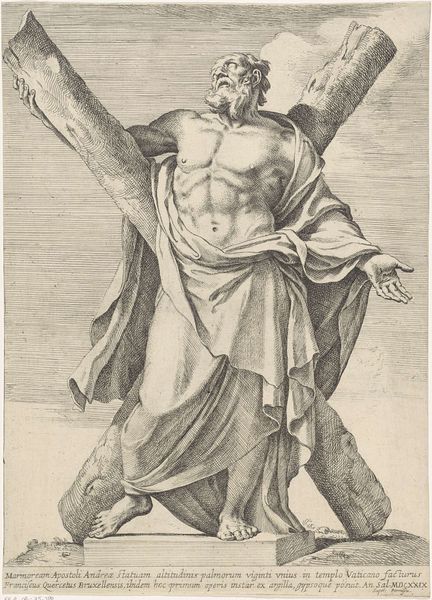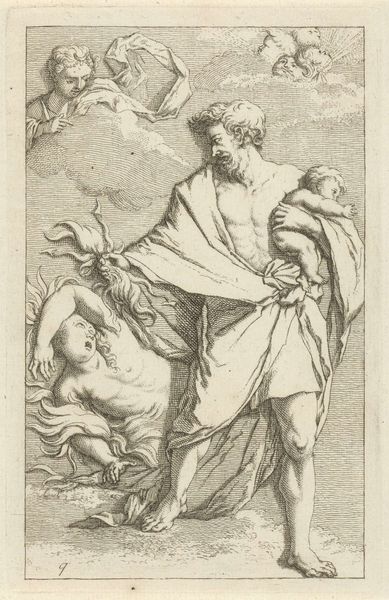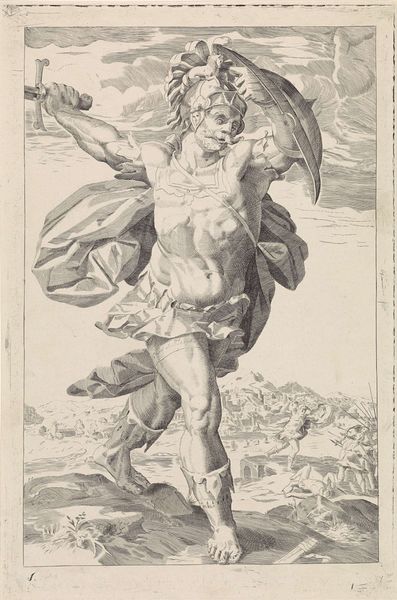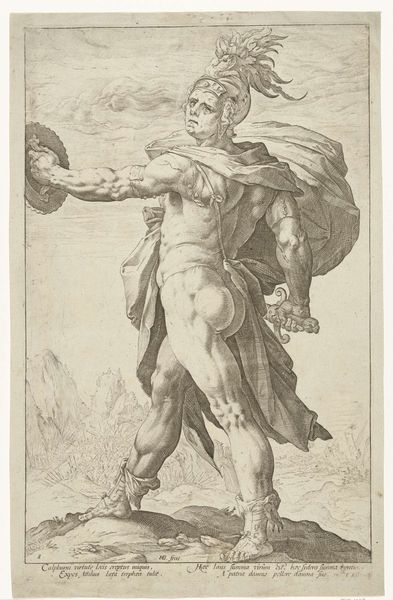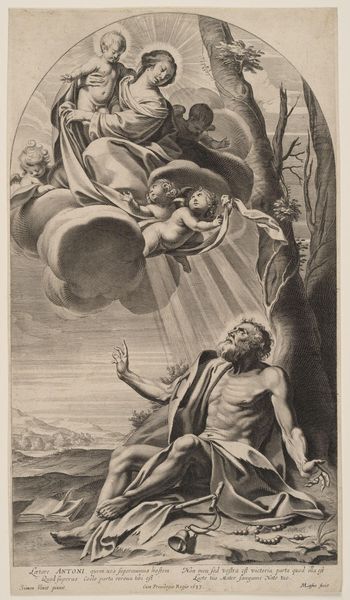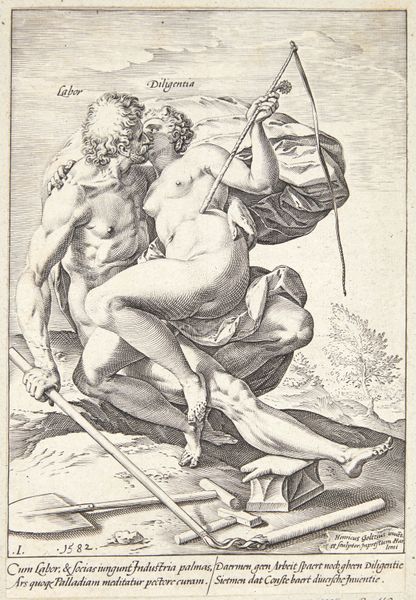
print, engraving
#
portrait
#
baroque
# print
#
figuration
#
mythology
#
portrait drawing
#
history-painting
#
engraving
Dimensions: height 338 mm, width 226 mm
Copyright: Rijks Museum: Open Domain
Curator: Here we have Jacob Matham's engraving, "Apollo als Helios," created between 1589 and 1593. It's a fascinating example of Baroque printmaking, currently residing in the Rijksmuseum. Editor: Wow, first impression? Dramatic! He's totally channeling that divine energy, arms outstretched, ready to, what, fling some sunlight around? There's a raw, muscularity—an almost theatrical boldness to him. Curator: Matham was part of a broader artistic milieu interested in reviving classical themes and ideals, especially how these were used to bolster aristocratic power. Representations of Apollo as Helios, the sun god, became vehicles to depict rulers and their authority as a source of enlightenment. Editor: Right, because nothing says "absolute power" like posing nude with a strategically placed cape and a glowing halo, eh? Seriously though, it’s powerful. I mean look at that light. He's striding confidently above the clouds! Curator: The choice of engraving also makes this piece so compelling from an art-historical perspective. Engravings like these were essential for disseminating imagery at the time, offering accessible copies of paintings or, in this case, a new artistic invention. Editor: It’s like Baroque Photoshop for the masses! Makes you think about art's purpose back then versus now, doesn't it? Is it about immortalizing an idea, spreading it wide? Or a bit of both? This piece gives me shivers—that raw, unfiltered ambition is palpable! Curator: I find that what remains striking, aside from the technical accomplishment, is the image’s enduring power to evoke both admiration and critique when we consider its social role, even centuries after its creation. Editor: Definitely gives you food for thought, not just about the artwork itself, but what its message actually communicates over time, or maybe it has been adopted with multiple purposes now in museums like the Rijksmuseum? A divine portrait that can now be questioned?
Comments
No comments
Be the first to comment and join the conversation on the ultimate creative platform.

